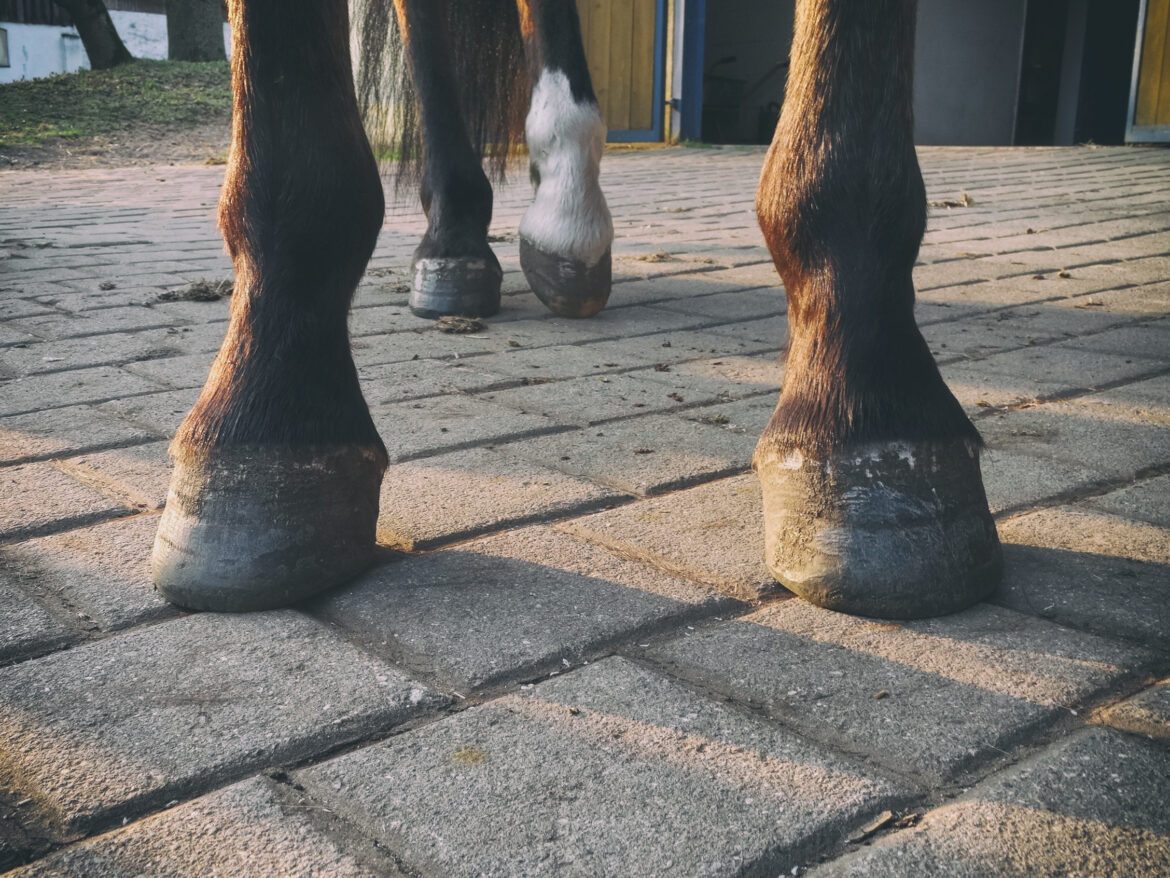As many riders and horse owners, I was used to clean up briefly my horse’s hooves but let the farrier take care of trimming, and general maintenance. I am ashamed to admit that I was so absorbed by groundwork and riding that I never really took the time to learn more about hooves, their diseases and treatments, trimming, care, etc.
Table of Contents
It all started when my horse stumbled once in a while during our working sessions, like a slight temporarily lost of balance on the canter. I took a closer look to his hooves, and what I saw (and smelled!) was really not pleasant: all four feet were contaminated with thrush _ deep thrush on the fore feet _, all four hooves were too long, and not correctly balanced… less than three weeks after the last trimming done by the boarding facility’s regular farrier! That person, so-called professional, did not notice the thrush, nor the high heels, nor the long toe and so on.
Resources
I decided to study hooves more precisely and, since I knew already that shoes are just wrong to the horses, my research naturally went to barefoot practitioners. A couple of books in particular really helped:
- Découvrir et Comprendre le Parage Naturel by Xavier Méal
- Making Natural Hoofcare Work for You by Pete Ramey
The first one was important to understand the detailed work and structure of a hoof, how common diseases like deep thrush and laminitis impact the horse’s feet, and consequently his mobility. Xavier Méal is a French disciple of KC Lapierre, in whose books you can find the same content in English.
The second one is a great practical guide, less hard science, more real-life lessons, although the information contained in that book is all based on scientific observations too. Pete Ramey has a particular talent to explain how the hoof works, and how you should trim your horse in a conservative though very efficient way. Both books and methods (Ramey’s and Lapierre’s) are strongly influenced by the original work done by Jaime Jackson on mustangs hooves.
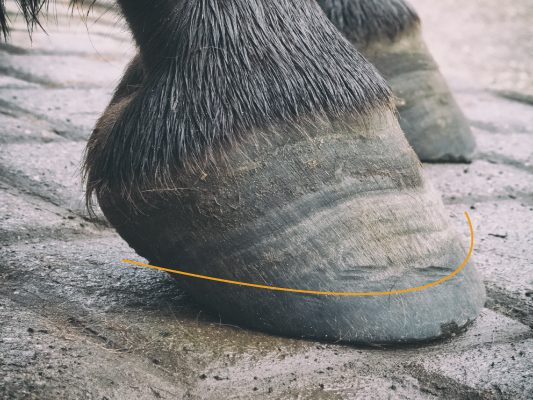
Natural trimming
I will not get into details of trimming a horse in this article, that will be the subject of future posts. Yet, in a few words, I’d like to start a little series to present my learning process of this very valuable skill that all horse owners and riders should know for a very simple reason: you can not trust anyone blindly, you ought to know the basics because you put all your weight on these four hooves all the time you get on the saddle. These are YOUR feet!
Trimming basics
- Remove the flaky sole but leave as much as possible the waxy sole.
- Remove extra frog material and level the bars.
- Reduce the heels if necessary, but never be too assertive.
- Snip the flare off the wall and shape the hooves.
- Rasp the edges to give the mustang roll.
Deep thrush
In the case of my horse, I had to clean up the hooves, and cut off the contaminated parts of the frog first. I have been very conservative, as it was the first time I manipulated these tools, and I did it bit by bit. As soon as I could, I started to treat the frog with a product called Negerol (that’s a French product but there are equivalent treatments in Europe and North America*), this is a blue spray containing an antibiotic. To be as effective as possible, I used cotton balls soaked up with the product that I pushed into the rotten frog.
I display here below pictures shot the very day of my first trimming attempt, and the same after one month. I have been able to use the deep thrush treatment only 15 days before the second series of pictures. The second day after the first trimming, Brego was not stumbling anymore and we worked canter and gallop on different terrains without any problem.
A few remarks
I invite you to take a closer look at a few details which make quite a difference:
March 19, 2014 – Toes, walls, and bars are too long; heels are too long and under-run; frogs are contracted and infected with deep thrush; hooves are misshaped and unbalanced; tissues are white and stinky, this being the result of a bacterial contamination.
April 20, 2014 – Toes have been backed up, walls and bars levelled; heels are shorter and getting better; new frog is growing strong; hooves are on their way to a better shape; tissues are dry and sound.
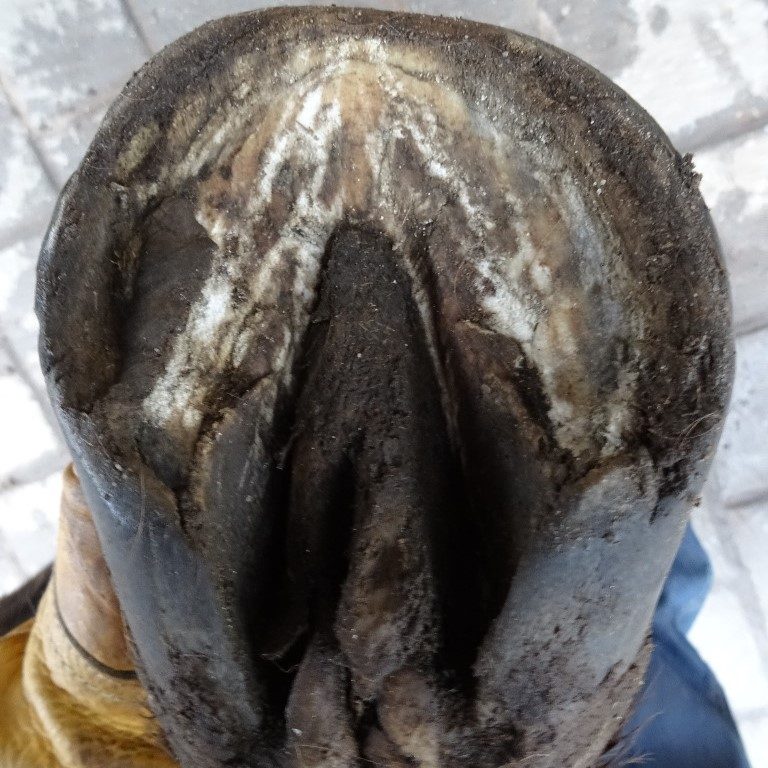
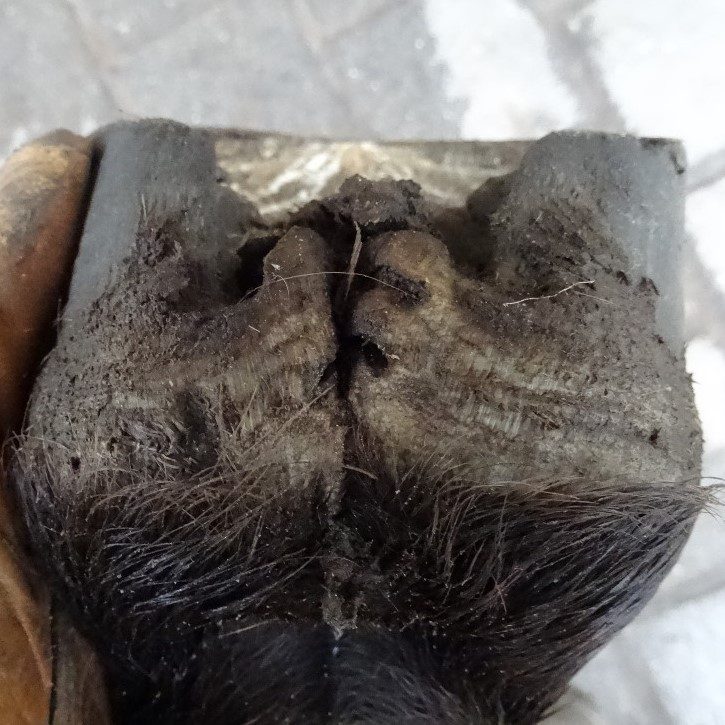
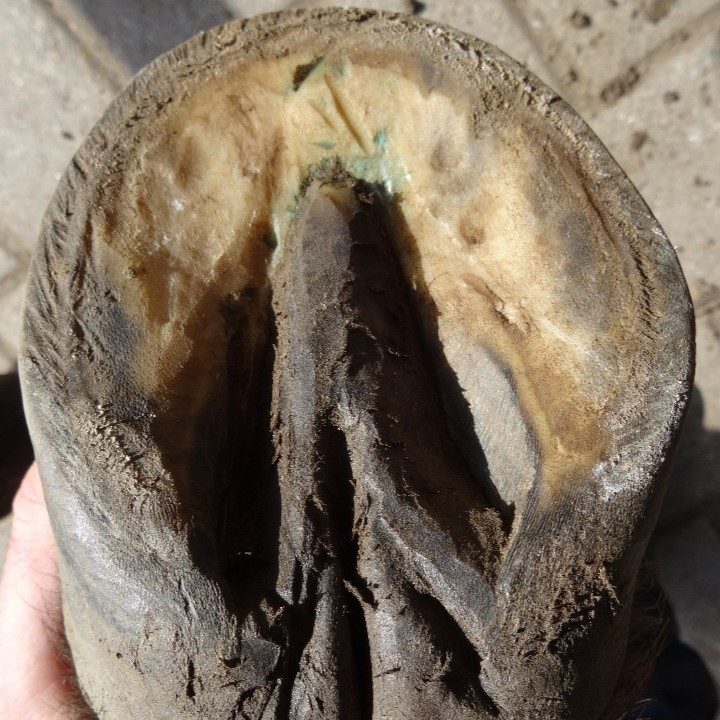
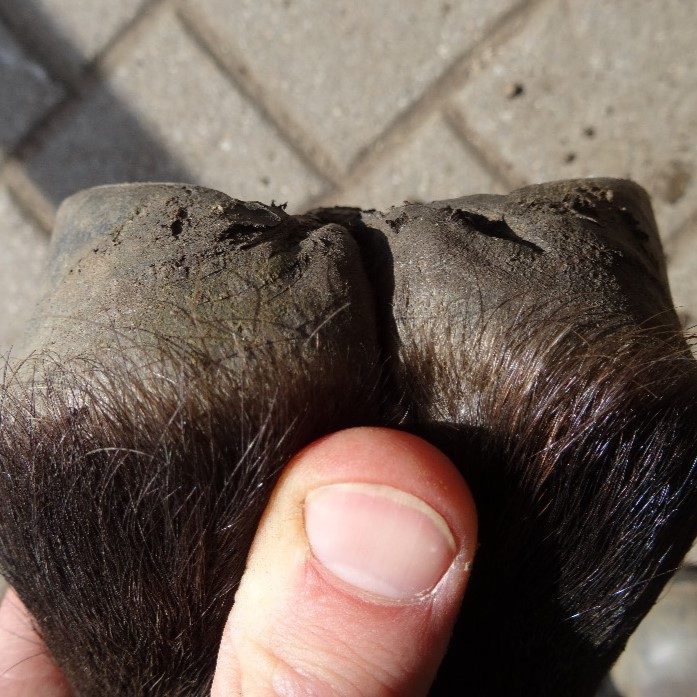
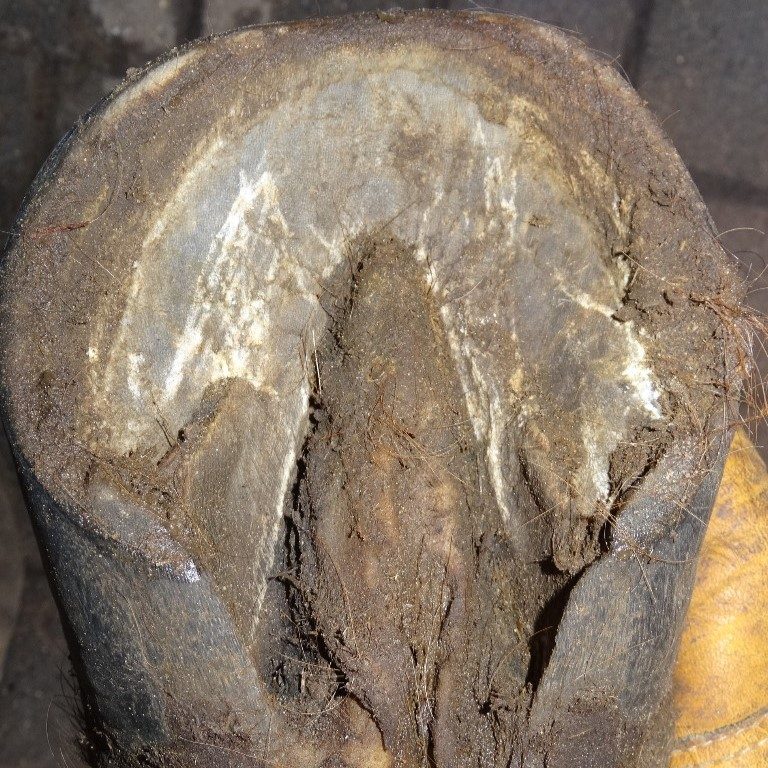

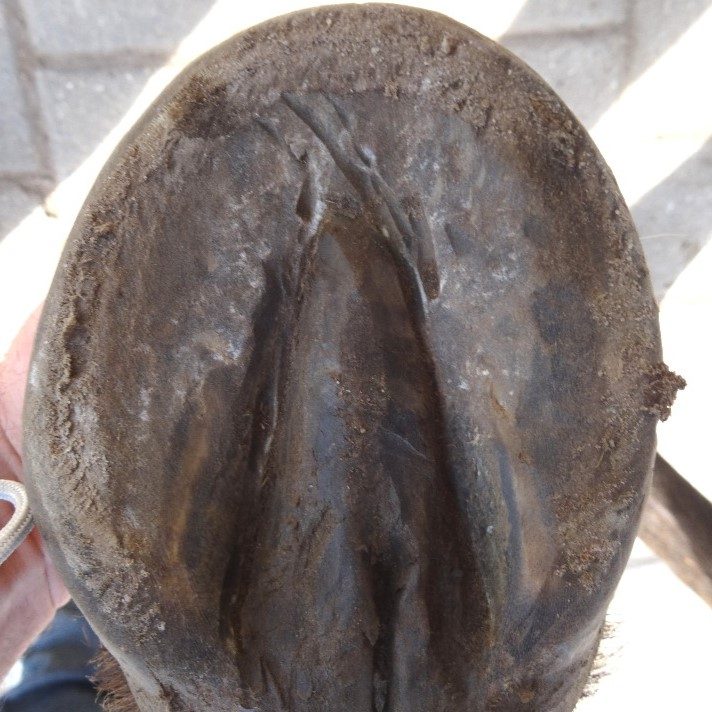
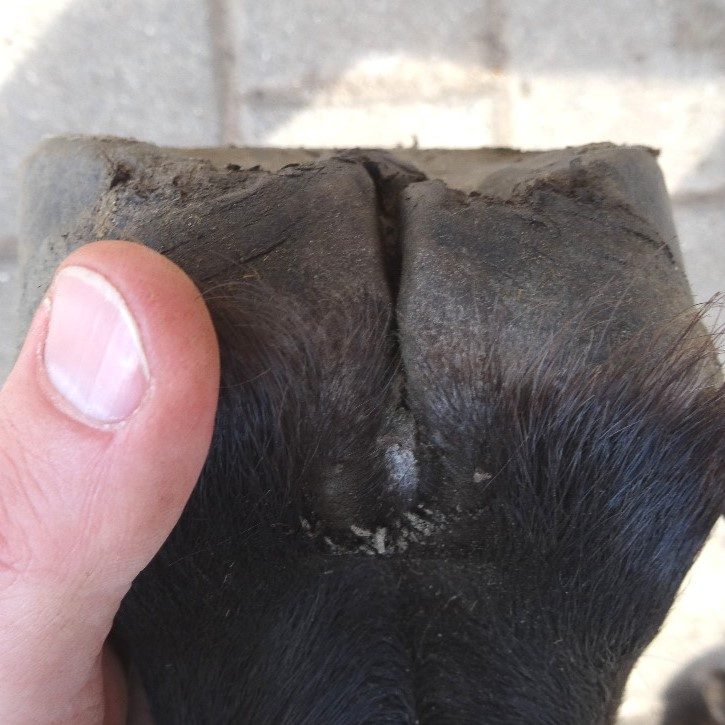
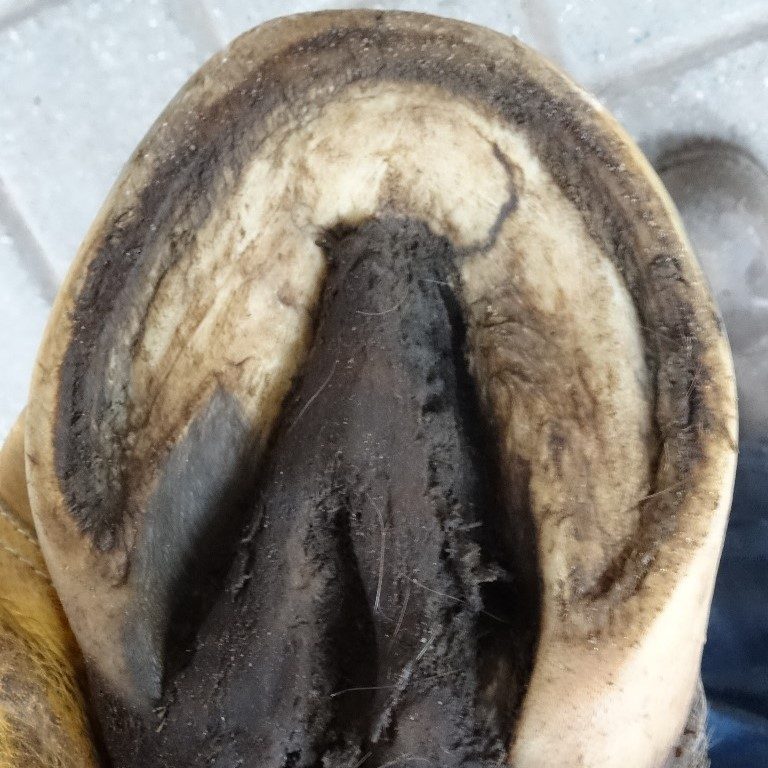
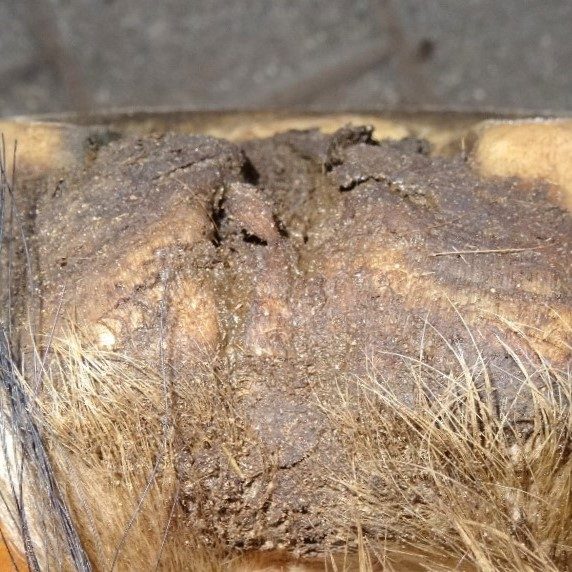
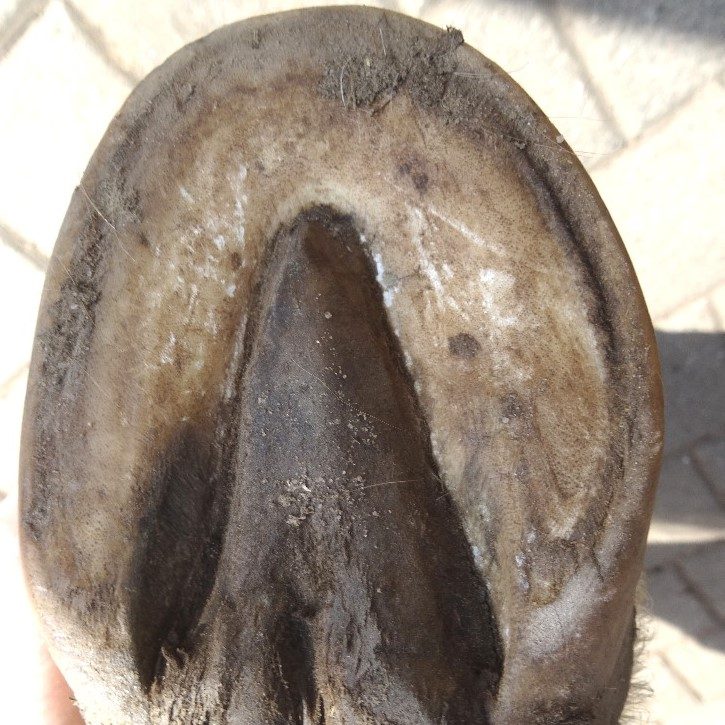

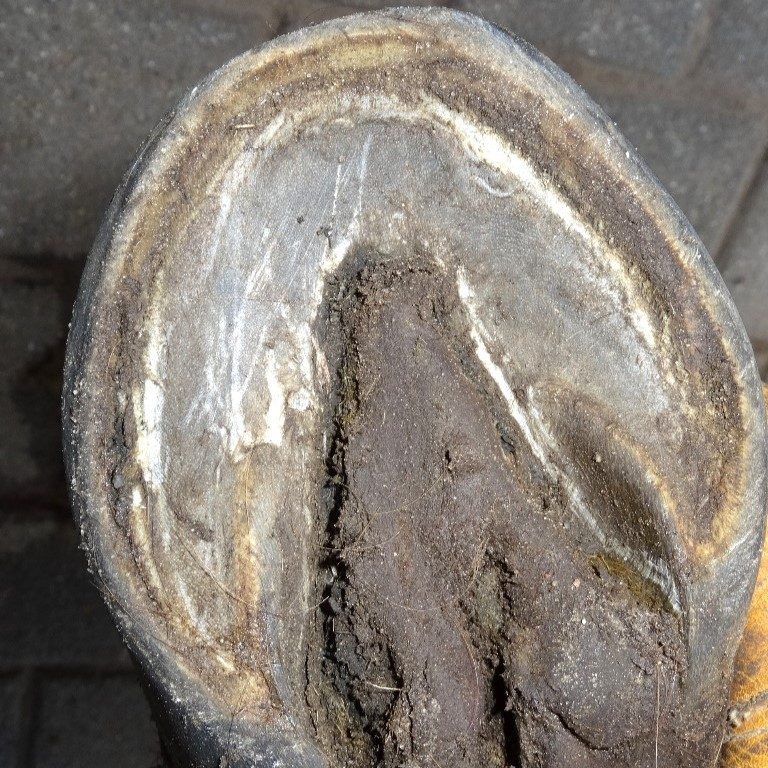
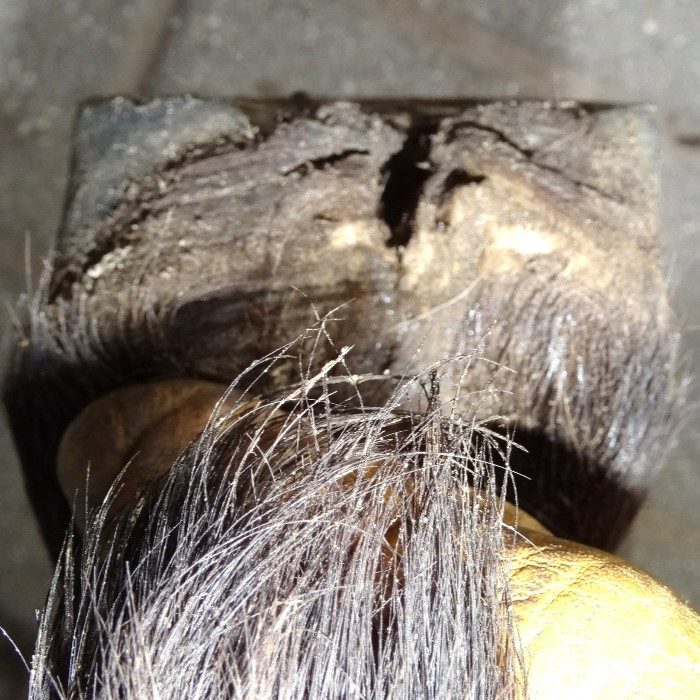
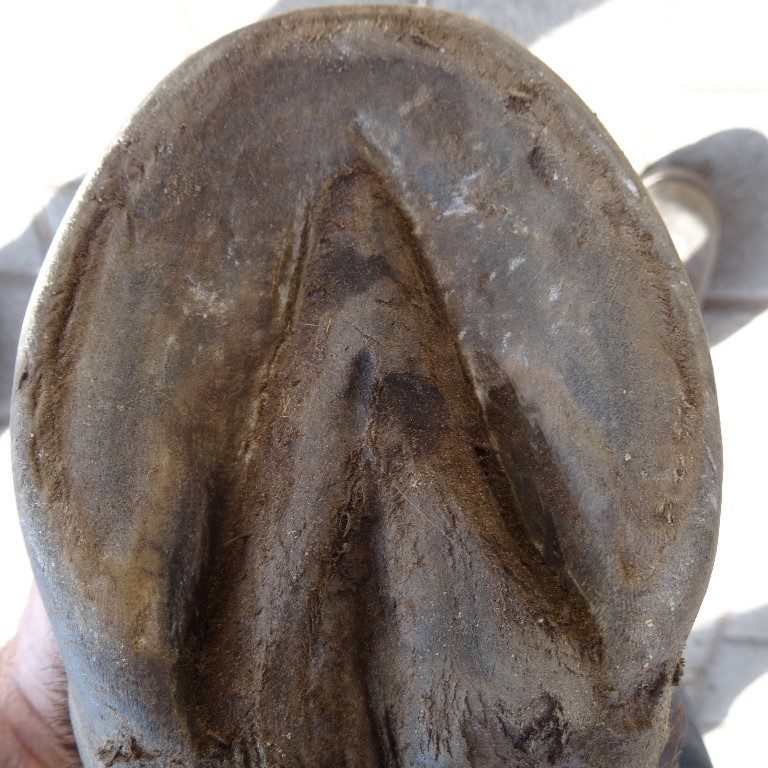
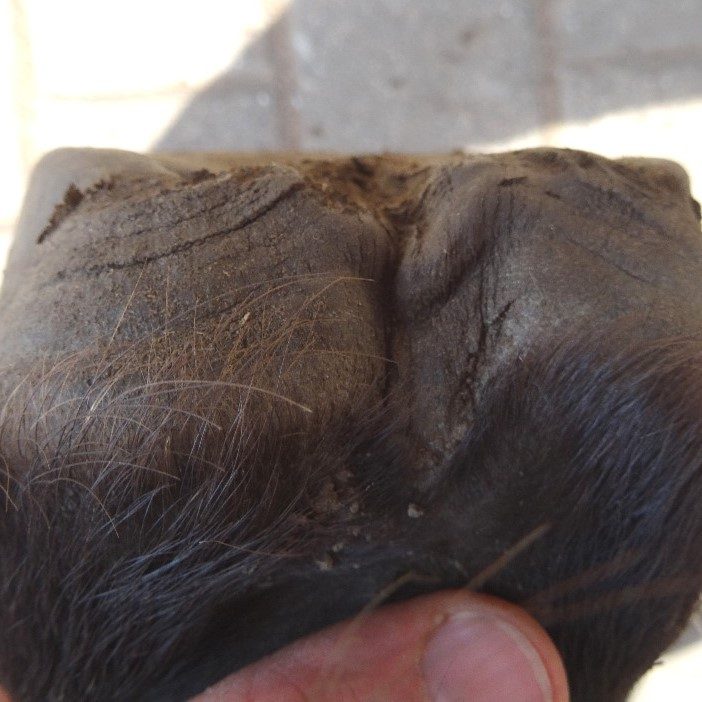
*You can take a look at products like Hoof Stuff by Red Horse Products which have quite a good reputation, or Silvetrasol and Thrush Ender that are recommended by KC Lapierre. A mixture of tea tree oil and vinegar cider can be quite efficient if the thrush is not too severe.
